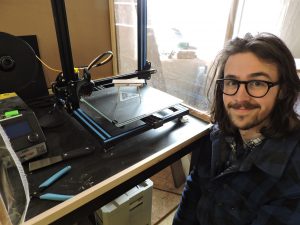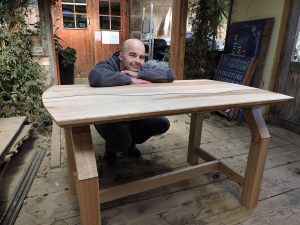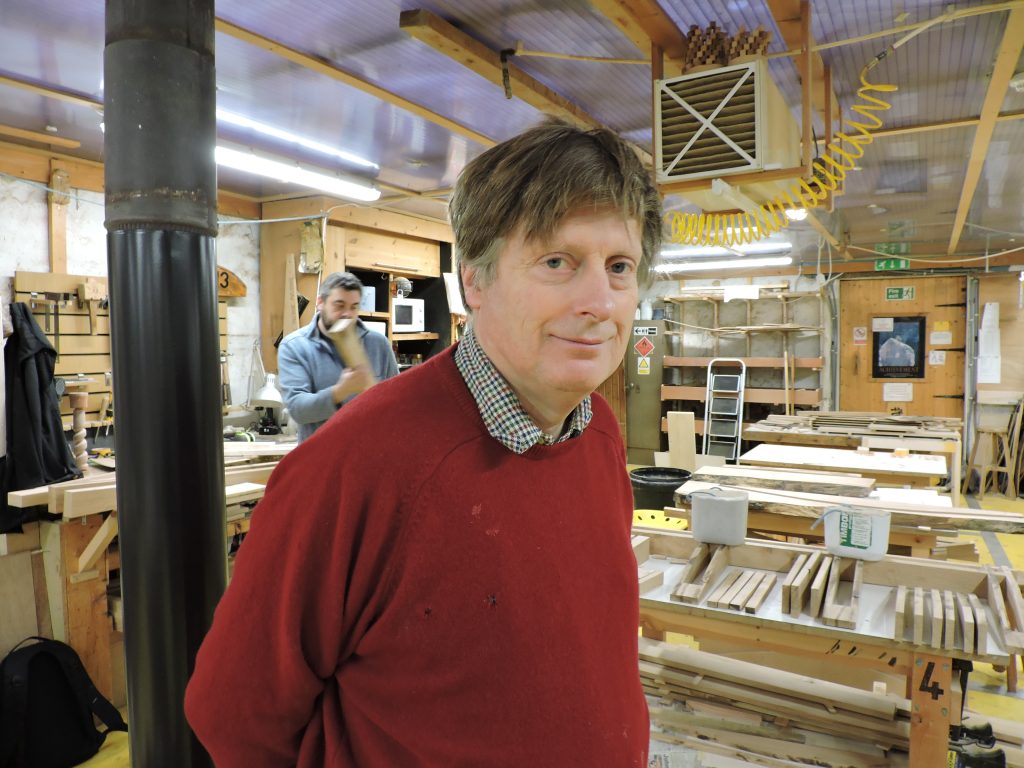Anselm Fraser, principal, Chippendale International School of Furniture, writes in The Woodworker magazine.
A first rule of furniture making is that you can’t make something until you’ve designed it.
It’s why woodworkers, from novices to skilled craftspeople, should from time to time lay aside their chisels and practice their design skills.
At the school, we first teach the age-old technique of 3D design. It teaches students how to visualise, to understand ratios and proportions, and to express their designs on paper.
Of course, there are software packages on the market that can also do an equally good a job. We applaud that because woodworking has always been about adopting new ways of working.
For example, a former student – now one of tutors – uses a 3D printer to bring his designs to life…albeit in miniature.

It allows him to show customers what their piece of furniture will look like. They can hold it, look at it from all angles and, if need be, tweak the design.
In other words, if you’re not adept with a pencil, make use of technology. Make no mistake, good designers make better woodworkers.
Furniture design and making is about finding a little bit of magic, and then communicating that magic to a potential customer.
Buyers
It’s about finding ways to connect with buyers, and to make what you’ve made stand out.
For me, the best way to connect with customers is to inject a little piece of your DNA into your furniture. If your designs echo a little bit of who you are, you’re much more likely to find a buyer.
For example, we had a student this year from Iceland. He’s a former trawlerman and wants to make furniture that honours the Icelandic fishing community.

He’s made an olive ash table, with a wave motif across its top. He also named it the Dolphin after the fishing vessel he sailed on. He designed the table’s legs to reflect the architecture of the ship’s gallows. That’s the arched structure at the rear of the trawler.
It’s a simple enough design flourish but it makes a connection to a buying market worldwide. It proclaims his passion for the sea, and makes his table commercially attractive.
Another student, Tom Smyth from Bristol, took a very different kind of inspiration for a steam-bent oak garden bench.
Roofing
His inspiration was work he carried out repairing the roof of a listed 400-year-old timber framed barn in Hampshire.
Although the scale of the roofing project was rather different, the principles of fashioning oak into strong and enduring structures are much the same.

Over the years we’ve had students who have displayed all sorts of imaginations, making everything from the utterly functional to the absurdly wonderful.
But the students who go on to do the greatest things are those who find little pieces of magic within themselves. They then find ways to share it, and working damn hard into the bargain.
That really does put the unique into bespoke.
Just remember, a priceless diamond is just a bit of coal that did rather well under pressure.
But what any devotee or student of woodworking has to learn is the Oscar Wilde observation that a cynic is “a man who knows the price of everything and the value of nothing.”
For a furniture maker, that means selling at a reasonable price, because it’s better to earn something rather than nothing. It means charging Ford prices before you can charge Rolls-Royce prices.
That will be the subject of my next article.
